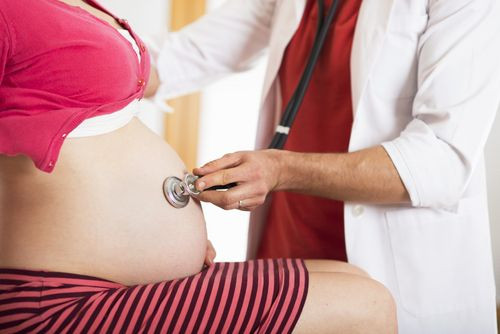New IVF Statistics Show Record Numbers In The US, But Who Are the Faces In The Waiting Room?

The Society for Assisted Reproductive Technology released its most recent data Monday on assisted reproductive technologies (ART) in the U.S. Aggregating statistics from its 379 member clinics, the society calculated a total of 165,172 procedures performed in 2012, resulting in 61,740 live births. This amounts to a new all-time high even when compared to 2011’s record-breaking figures: 154,412 cycles resulting in 59,446 babies born. The society represents more than 85 percent of the ART clinics in the country but not all of them, so conceivably — excuse the pun — the actual number of IVF procedures resulting in babies may be even higher. In all likelihood, though, the babies born through IVF still only amount to less than two percent of all annual births in the U.S.
The success of ART clearly favors younger women: 46.7 percent of cycles using non-donor eggs resulted in live births for women under the age of 35, whereas only 8.6 percent of similar cycles results in a live birth for those over 42. The numbers incrementally dropped for the ages in between with women between the ages of 35 and 37 successfully producing a baby nearly 38 percent of the time, the 38 to 40 age group successful almost 30 percent of the time, and 41 to 42 age group successful almost 20 percent of the time. The odds of older women’s success increased when using donor eggs; such IVF procedures resulted in live births 17.8 percent of the time.
Success or failure, the fact remains over 165,000 IVF cycles were performed in a single year. Who, then, are the people opting for this procedure and what are their reasons?
The original scientists and doctors performed the research to make IVF a possibility for infertile couples. The very first patient to successfully carry an IVF pregnancy to term, Lesley Brown, had been trying to conceive a child with her husband for nine years but consistently failed due to blocked fallopian tubes. Other cases include couples with unexplained or difficult to address fertility issues, such as a low sperm count in the man. Most people readily sympathize with couples in these situations as they do when IVF is used in cases of illness, such as when a woman, given a diagnosis of cancer, preemptively saves her healthy eggs for later use. In such cases, a women will make use of ART prior to undergoing cancer treatments in the hopes of overcoming the disease and then giving birth by way of an IVF cycle that makes use of an egg that has been unaffected by chemotherapy.
According to the statistics released by the Society, about 75 percent of all instances of ART were performed due to one or some combination of the above diagnoses. Meanwhile about 17 percent of all instances of ART were attributed to a diagnosis of diminished ovarian reserve, in which a decreased number of viable eggs are available — a type of infertility commonly associated with older women, though a complication that can affect women of all ages. Finally, “other” accounted for eight percent of all diagnoses that resulted in the use of ART.
Who fits into this category? Perhaps this is the box checked by practitioners when a woman has chosen to have a child using a sperm donor, whether that be on her own behalf or to benefit a gay couple. Those who wish to prevent birth defects may also be included in this category. Preimplantation Genetic Diagnosis (PGD) — also referred to as Preimplantation Genetic Testing or Preimplantation Genetic Screening — identifies genetic defects within embryos created through IVF. Often, one or both partners have been identified as a genetic carrier of some potential disability so a doctor will remove one or two cells from each embryo created during an IVF cycle. Once the DNA is evaluated and deemed healthy, the embryo will be implanted into a woman’s womb. PGD has also been used for the purpose of gender selection, and as such, is an early form of eugenics.
Though the digits are rising, contemporary birth technologies still account for a very small fraction of total births. Has a plateau been reached or will the numbers continue to climb?
It's difficult to imagine large numbers of healthy women choosing to get pregnant by way of IVF if only because the egg harvesting procedure seems rather unpleasant and time-consuming as well. It begins with drug injections over a period of up to two weeks in order to pause a woman’s ovulation — essentially, she will be hurled into a state of temporary menopause with possible side effects that include mild headaches, hot flashes, and fatigue. Following this, the woman begins a new series of injections, this time of follicle-stimulating hormones. Next, she receives a final injection of a hormone that stimulates ovulation. At last, she is ready for egg retrieval. This is performed vaginally. A doctor removes her eggs with a needle guided by ultrasound in a procedure that takes about 20-30 minutes and requires sedation.



























